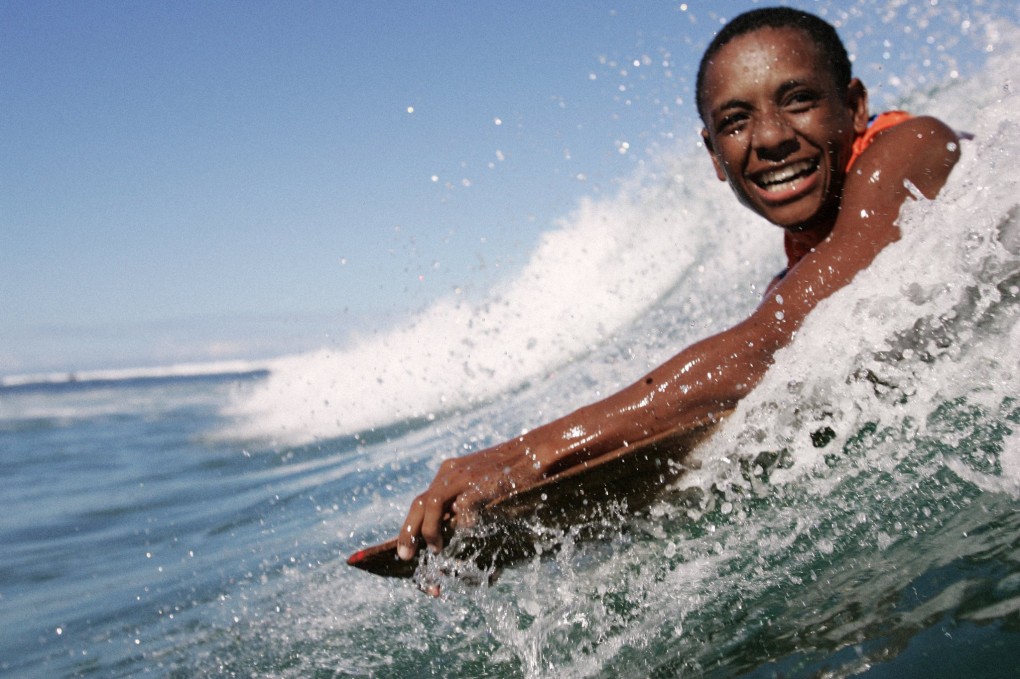
On the outside, Papua New Guinea looks like paradise. Golden beaches, palm trees, perfect uncrowded barrelling waves. But as with many places like this, there’s a darker side to life on the island.
Back in 2007, Adam Pesce travelled to a remote village on the north coast of Papua New Guinea called Vanimo to document the country’s very first national surf competition on film.
“I never set out to make a “surf movie”,” said Adam. “My aim with Splinters was to introduce the viewer to an experiment unfolding in a Petri dish…”
“I never set out to make a “surf movie”. “My aim was to introduce the viewer to an experiment unfolding in a Petri dish…”
Adam and his crew ended up delving into the inner workings of an isolated tribal community into how surfing has changed their lives for the better.
The documentary was called Splinters and on Wednesday, it was shown to a packed out auditorium last night as part of a special screening tour, hosted by the London Surf/Film Festival.
The film shows Papua New Guinea as a beautiful country with a deep sense of community spirit and generosity. But it’s also a place where poverty reigns, food is scarce and women are regularly beaten by their partners.
So how did this remote corner of the world come to have a fiercely competitive surf scene? And what did we discover beneath the surface?
The First Surfer
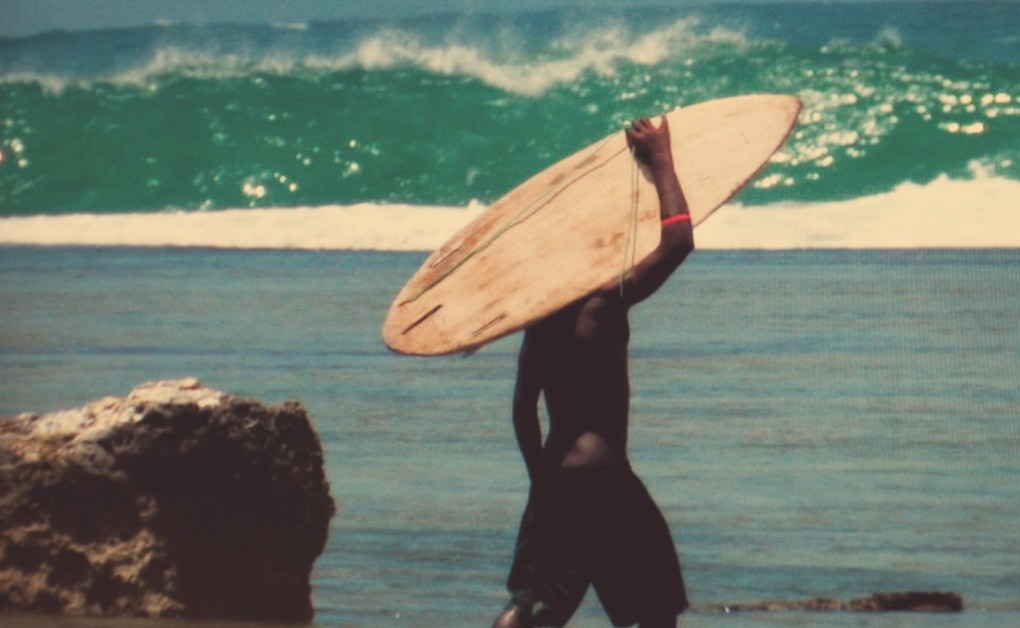
In the 1980s, an Australian pilot called Crazy Tas landed on the shores of Papua New Guinea. He brought with him a surfboard. The villagers of Vanimo didn’t realise at the time, but this was the start of something that would change their town forever.
Bellyboarding had been a popular pastime for generations, but they’d never seen a modern surfboard ride the waves like this before.
When Crazy Tas left, he gave his board to the local people – and so began Papua New Guinea’s obsession with surfing. Soon locals were making their own roughly-shaped boards out of broken wooden canoes and called them ‘splinters’.
Now 27 years later, the country has over 500 dedicated surfers and dozens of established surf clubs. Every year, the National Surf Championships are held to decide who is the best surfer on Papua New Guinea.
For these men and women, this isn’t just the chance to surf internationally – it’s a ticket to escape the island and start a new life. But with the pressure to succeed comes a whole new form of rivalry…
Surf club rivalries
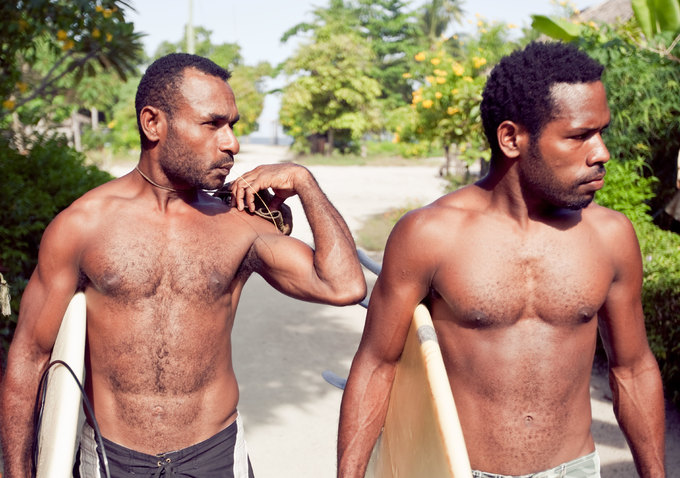
Tribes are deeply-rooted in the make-up of Papua New Guinea. 850 languages are spoken in a country which is just over twice the size of the UK, that’s a quarter of the dialects spoken in the world.
It’s a nation of tribal communities that rarely mix with one another, let alone the outside world. Fierce rivalries form between tribes, so it’s no surprise that the same tensions exist between surf clubs – in particular Sunset Surf Club and Vanimo Surf Club, run by the island’s former best surfers Steve and David respectively.
Angelus is the self-professed “king” of surfing in Papua New Guinea. He’s by far the most talented surfer on the island – and won’t let you forget it.
“If you try to stop me, you will die” – Angelus
Back in 1998, Angelus competed in a surf comp in Fiji. He was offered a contract by Billabong to surf in Australia, but it never came through. Angelus blamed Vanimo Surf Club for not completing the paperwork properly, and has therefore been stuck in Papua New Guinea since.
Angelus and Steve separated from VSC to form the new Sunset Surf Club – and so the rivalry began. Come the inaugural National Surf Championships, tensions between the clubs were more heated than ever before.
While the film follows the lead-up to the National Championships, a more shocking side was ultimately revealed – the brutality of surviving everyday life in Papua New Guinea.
Creating jobs through surfing
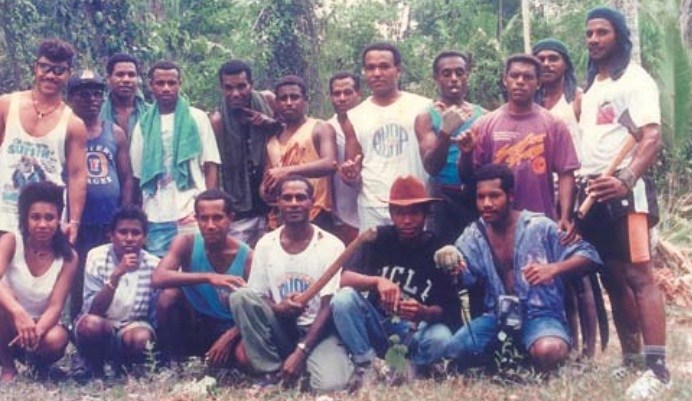
One-third of Papua New Guinea’s population live on less than 75p per day. Unemployment and poverty is rife. The surfers documented in Splinters struggle to make ends meet by baking loaves of bread, loading logs onto ships and making saksak, the local food, to sell.
When Australian Andy Abel came to Vanimo in 1988, he couldn’t believe how resourceful the surfers here were. All they had for inspiration was Crazy Tas’ shortboard and an old 1980s surf magazine which they modelled those first handmade wooden boards and fins from.
The waves were perfect – and totally empty. Andy saw the potential for Vanimo to become a vibrant surf destination for foreigners – and consequently create tourism jobs for the local people.
But there was a problem. What happens to local communities when word gets out that there’s idyllic, crowd-free surf just a few hours flight from Australia?
“97% of Papua New Guinea is owned by the people and we want to keep it that way”
Countries like the Mentawis and Bali have already been irrevocably changed as a result of tourism crippling the local community and destroying the environment.
Andy didn’t want the same to happen to Papua New Guinea, so he created a sustainable tourism model which is now imposed by law throughout the country.
“97% of Papua New Guinea is owned by the people and we want to keep it that way,” he says.
Andy set up the Surfing Association of Papua New Guinea over 20 years ago to support the local surf clubs, providing them with new surfboards from Australia and raising funds to get top surfers competing overseas.
“It’s about empowering communities,” he says. “There’s now a thriving surf movement in Papua New Guinea, we’re trying to complement that with surf tourism industry.”
SAPNG helps provide jobs for local surfers in the surf tourism industry, to give them a steady income to provide for their family.
Tackling violence against women
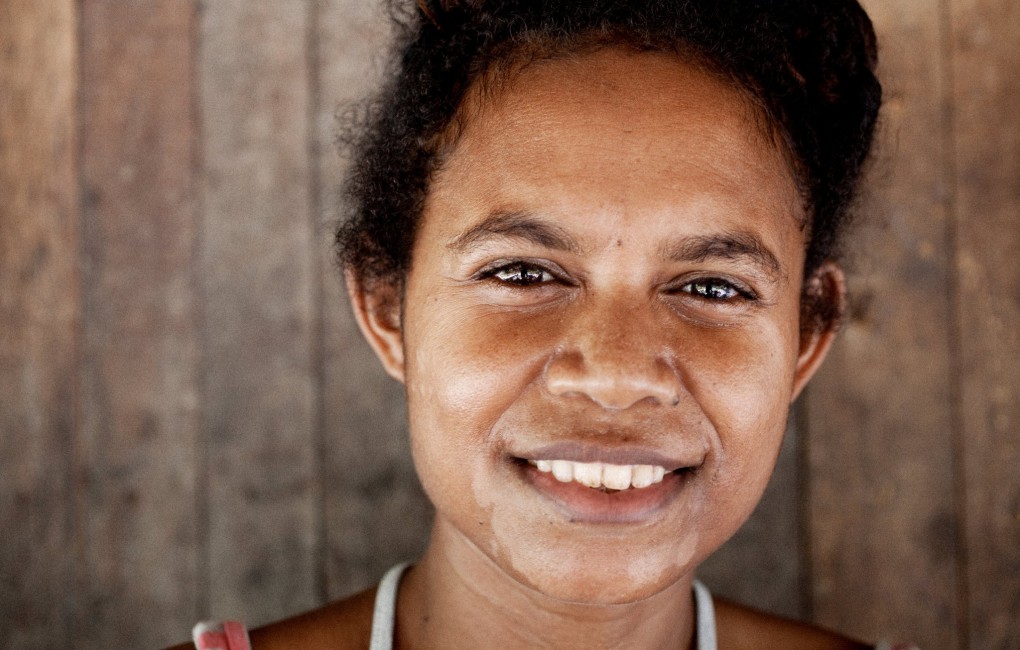
Papua New Guinea has one of the highest domestic violence rates in the world. One in five women’s first experience of sex in PNG is rape and 75 per cent of children report physical abuse in the home.
As it stands, men currently buy their brides in Vanimo. Until then, she’s owned by her family.
Women surfing is looked upon with disapproval; many men still feel a woman’s place is in the home, not in the ocean. The beach in Vanimo was divided in half, the women surfed on the right-hand side and men on the left.
Violence is just as commonplace in Vanimo as it is throughout PNG. In one scene in Splinters, we see a girl being kicked and beaten in front of a huge crowd by her brother, simply for going surfing.
In another Lesley, the best female surfer on the island, is caught fraternising with a married motel owner. Her family beat her with a stick and shred her clothing as punishment.
“If you’re a village girl, you must bake and sew, a village girl’s life is no good. We women don’t have the power to talk” – Lesley
We see in the film Andy Abel noticing how the surfboards donated to the town of Vanimo are not being equally shared by the men with the girls.
When Andy brought up the issue with the male surf club leaders and suggested introducing a female vice president, they were vehemently opposed to the idea. “It is our tradition! We don’t want women coming in and telling men what to do” they exclaimed.
Andy confiscated the boards until they agreed to let women onto the surf clubs’ executive boards. “Through surfing, we brought about change,” says Andy. “We now have girls catching the same waves as men.”
How do they prevent the club’s new boards from being dominated in the same way? “We’ve painted the noses fluorescent pink. So if we spot one of the guys riding a pink board on the water, they’re in serious trouble.”
Since the film was recorded in 2007, female equality has improved. There’s now just as many women surfing regularly as there are men, but PNG still has a long way to go.
As Andy says, “we are a young nation. We have our issues. I turn on the news every night and see the same kind of violence happening all over the world. Don’t you have violence? Rape? Murder? We’re working hard to address these issues.”
Surfing as a tool for change
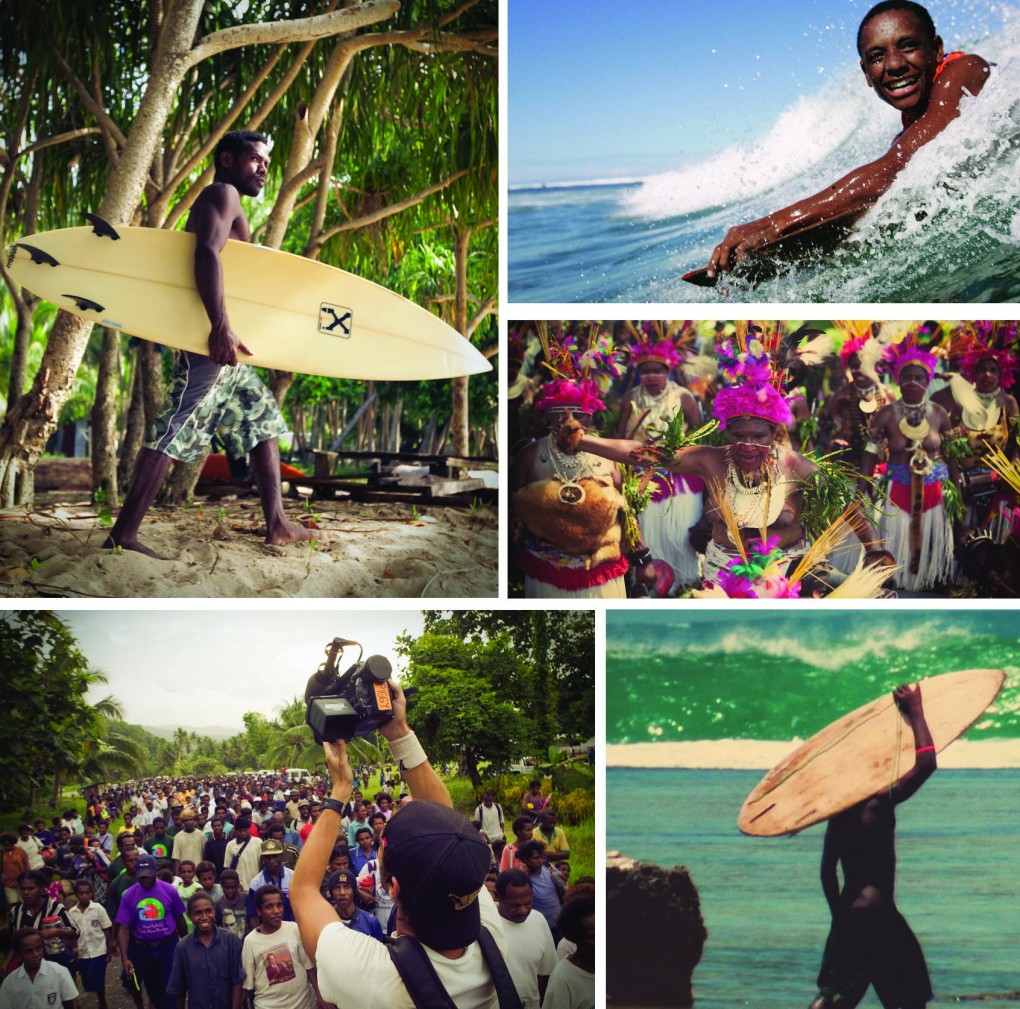
Since the film was originally released in 2011, there has been a lot of changes in Papua New Guinea.
Splinters shows the amazingly resourceful side of the people of Papua New Guinea, but it also opened our eyes to the deeper goings on within these tribal communities.
As Andy Abel explains, surfing here has been a tool for change in the community.
Through the work of the Surfing Association of Papua New Guinea, the village of Vanimo has undergone fundamental changes. Women are now slowly being treated as equals in the water. The surf community has begun to welcome hundreds of surfers from across the world every year to stay in their villages and surf their waves.
“Through surfing, we have brought about change”
Surf tourism has created an entire job industry in the town that didn’t exist before. With Andy’s sustainable tourism plan in place, it should only be a positive development for the whole community. They just ask visitors respect Papua New Guinea and the reef as if it were their own home.
While the dark side of Papua New Guinea is so prevalent in Splinters, it also shows a joyful, close sense of community and spirit towards surfing that’s truly humbling.
If surfing can make a positive impact on Papua New Guinea, where else could it make a difference?
You can read more about Splinters and the Surfing Association of Papua New Guinea here.
Watch the full trailer of Splinters here or rent the film from iTunes for £3.99 here.